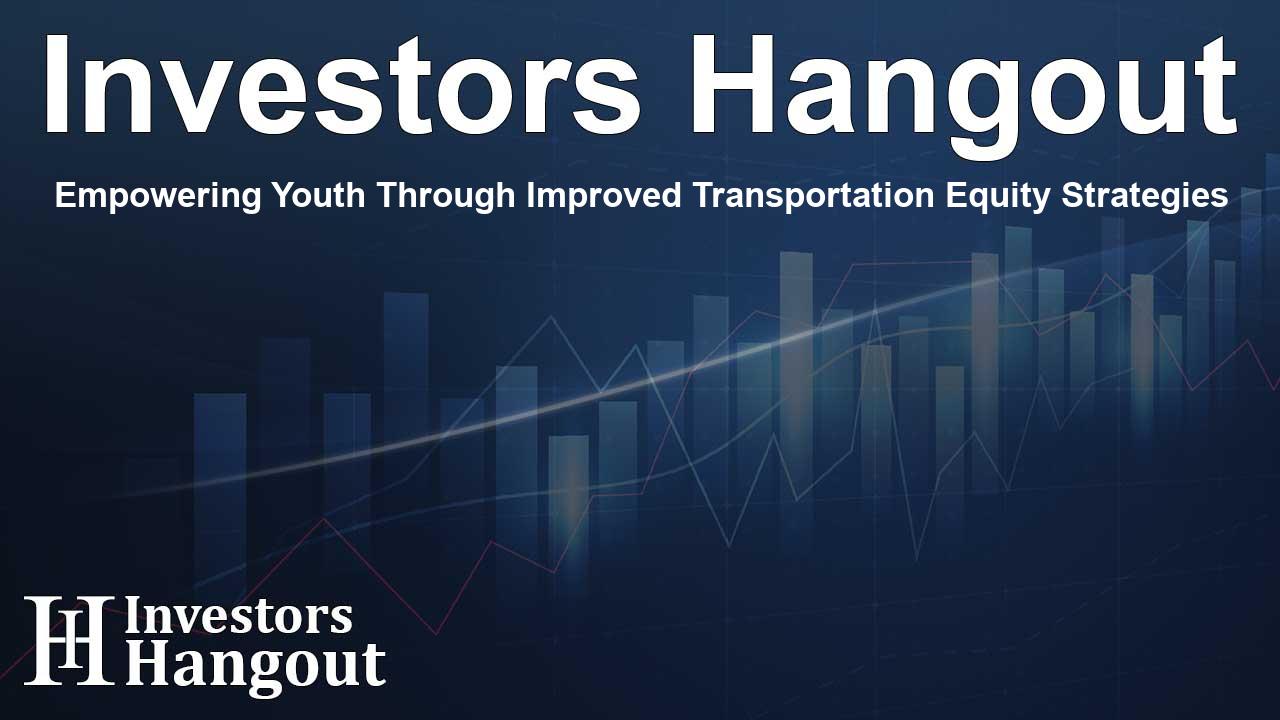Empowering Youth Through Improved Transportation Equity Strategies

Empowering Youth Through Improved Transportation Equity Strategies
The Equitable Access to Transportation Advisory Council (EATAC) has unveiled a pivotal set of 10 recommendations aimed at enhancing transportation access for America's youth. This initiative is particularly significant given the 54 million students across the nation who rely on effective transportation to achieve their educational goals. A recently conducted survey revealed critical gaps in youth transportation services, drawing attention to the urgency of addressing these issues.
Understanding the Survey Insights
The survey, which incorporated feedback from policy experts, program directors, and advocates in child welfare, education, and transportation, indicated that a staggering 93% of respondents identified resource shortages as a fundamental barrier to equitable access. Additionally, 87% stressed the necessity for flexible transportation services that can adapt to the diverse needs of students.
Voices from the Council
Vanessa Davis, a founding member of EATAC and Co-Manager of Foster Youth in Action, shared her compelling perspective on the importance of reliable transportation. "Access to dependable transportation is essential for educational achievement. My experiences in foster care have shown me how transportation obstacles can hinder academic progress for our most vulnerable children. Through EATAC, we aim to guarantee that every student has reliable access to both school and after-school activities, no matter their circumstances," she expressed.
Key Recommendations for Policymakers
The recommendations released by EATAC serve as a comprehensive guide for state policymakers and transportation administrators, highlighting critical strategies to enhance youth transportation equity:
- Develop Dedicated Vulnerable Student Transportation Services: Establish specialized programs aimed at supporting students in foster care, ensuring they have consistent access to educational resources while clarifying funding responsibilities.
- Create Community Transportation Hubs: Construct safe transportation hubs in underserved neighborhoods, complete with adult supervision at transit points, to create secure waiting areas for students.
- Launch Rural and Urban Transportation Programs: Implement customized solutions that cater to both rural and urban settings, featuring flexible vehicle services and expanded transit options.
- Implement GPS Tracking and Communication Systems: Introduce GPS tracking on school buses to facilitate real-time monitoring by parents and schools, ensuring timely updates about delays or changes to routes.
- Expand Carpool and Rideshare Partnerships: Collaborate with rideshare services tailored for youth, and promote organized school-based carpools to fill existing transportation gaps.
- Create Tiered, Income-Based Pricing Models: Introduce a sliding scale for transportation fees aimed at low-income families, improving access compared to traditional school bus options.
- Implement Bullying Prevention Programs: Offer training for transportation staff to foster safe and secure travel environments for students.
- Promote Safer Routes and School Zones: Advocate for better infrastructure and safety measures around schools to ensure student safety on the roads.
- Address Transportation Workforce Barriers: Streamline licensing processes and provide incentives to attract more drivers, focusing on bolstering youth transportation availability.
- Advocate for Increased Funding and Research: Support efforts to secure additional funding while investigating the connections between transportation access and educational success.
Addressing Transportation Challenges
These recommendations build on EATAC’s prior report entitled "Transportation as an Opportunity Lifeline," examining the specific transportation barriers that vulnerable populations face. With a Council composed of ten professionals from various fields, EATAC is dedicated to identifying and resolving transportation equity issues in education.
For further details about EATAC’s recommendations and the findings of the survey, continue to explore relevant resources about transportation equity.
Frequently Asked Questions
1. What is the purpose of EATAC?
EATAC aims to enhance transportation access for vulnerable youth, especially those in foster care or facing socioeconomic challenges.
2. How were the recommendations developed?
The recommendations were informed by a comprehensive survey that gathered insights from experts across various fields related to child welfare and transportation.
3. What specific issues does EATAC address?
EATAC focuses on the transportation barriers that prevent students from accessing educational opportunities and offers solutions to improve equity.
4. Who are the members of EATAC?
The Council includes a diverse group of ten experts from sectors like transportation, education, and child welfare.
5. How can policymakers implement these recommendations?
Policymakers can review the recommendations and begin collaborating with relevant agencies to formulate strategies that improve youth transportation access across communities.
About Investors Hangout
Investors Hangout is a leading online stock forum for financial discussion and learning, offering a wide range of free tools and resources. It draws in traders of all levels, who exchange market knowledge, investigate trading tactics, and keep an eye on industry developments in real time. Featuring financial articles, stock message boards, quotes, charts, company profiles, and live news updates. Through cooperative learning and a wealth of informational resources, it helps users from novices creating their first portfolios to experts honing their techniques. Join Investors Hangout today: https://investorshangout.com/
Disclaimer: The content of this article is solely for general informational purposes only; it does not represent legal, financial, or investment advice. Investors Hangout does not offer financial advice; the author is not a licensed financial advisor. Consult a qualified advisor before making any financial or investment decisions based on this article. The author's interpretation of publicly available data shapes the opinions presented here; as a result, they should not be taken as advice to purchase, sell, or hold any securities mentioned or any other investments. The author does not guarantee the accuracy, completeness, or timeliness of any material, providing it "as is." Information and market conditions may change; past performance is not indicative of future outcomes. If any of the material offered here is inaccurate, please contact us for corrections.